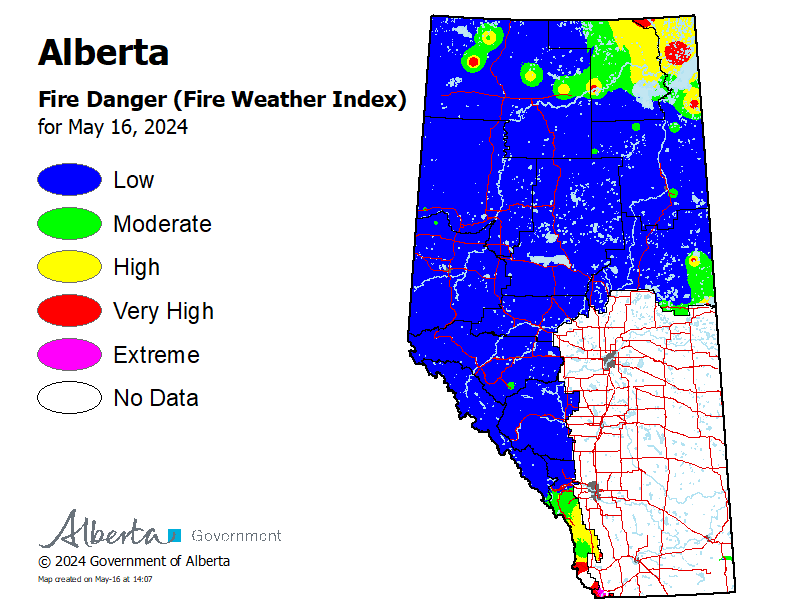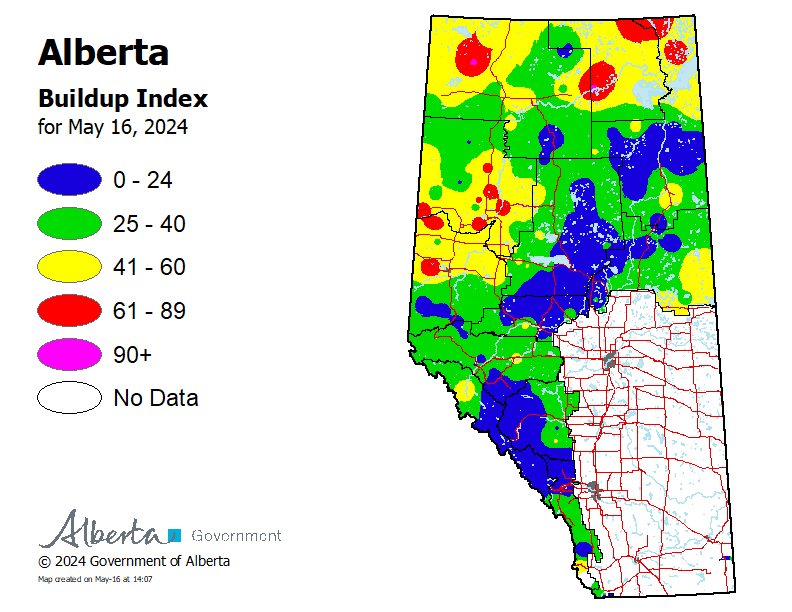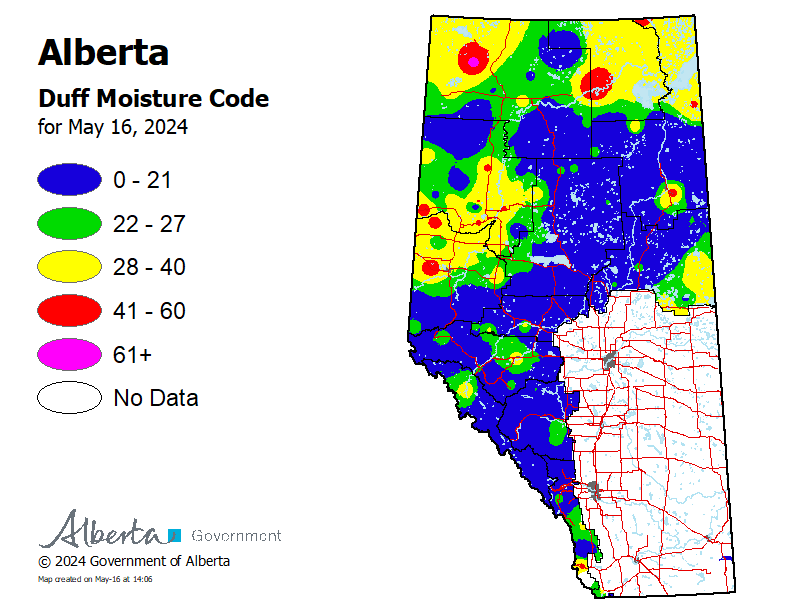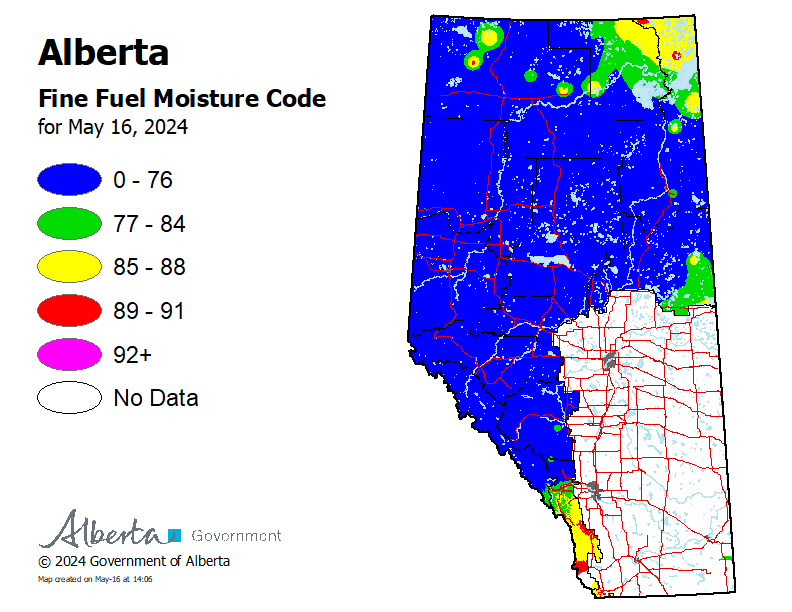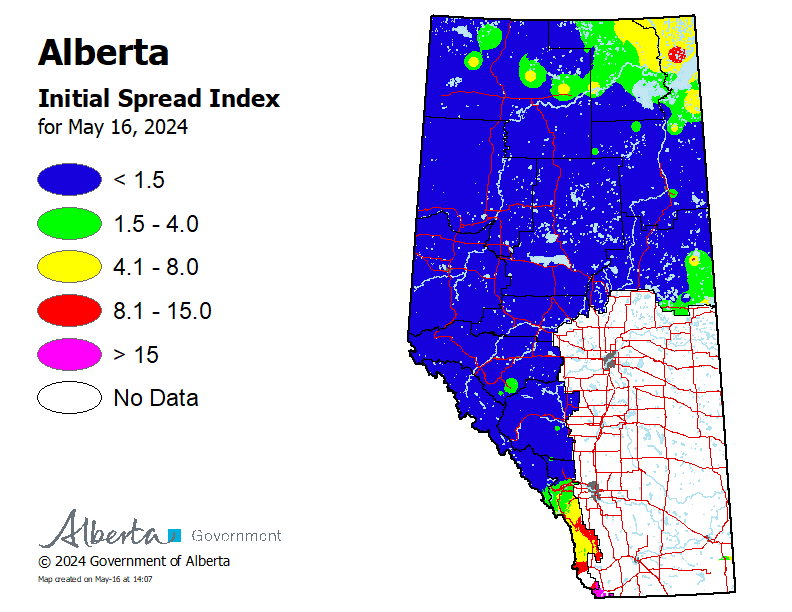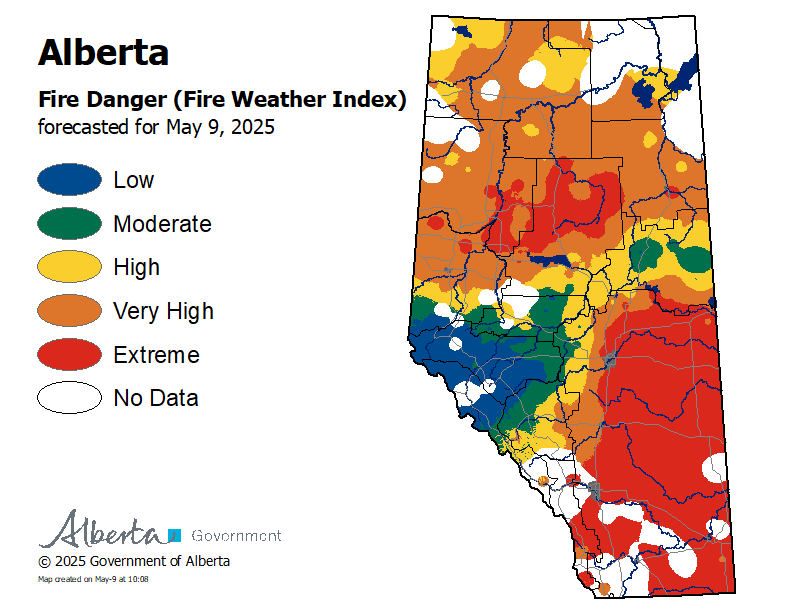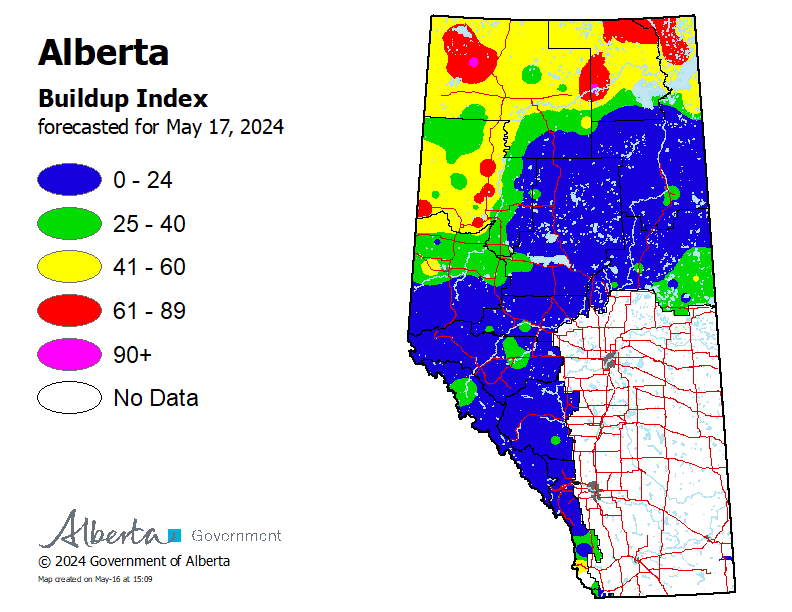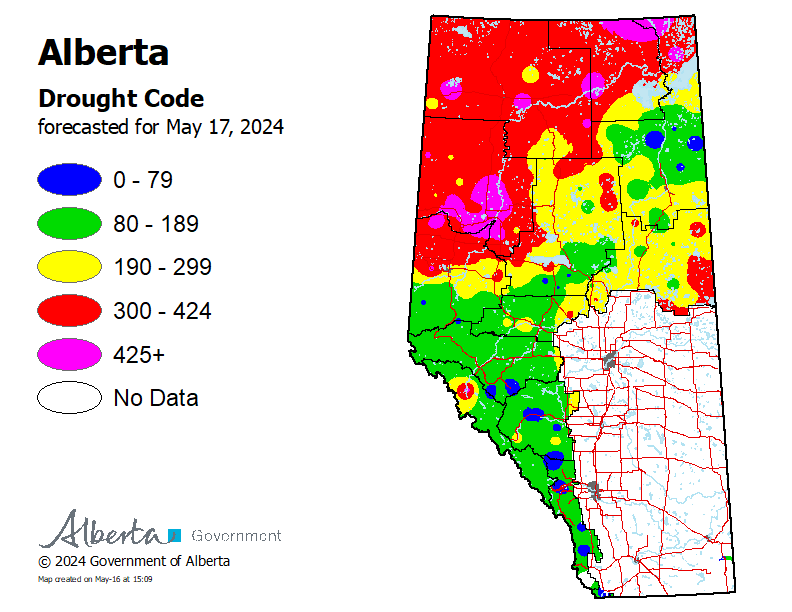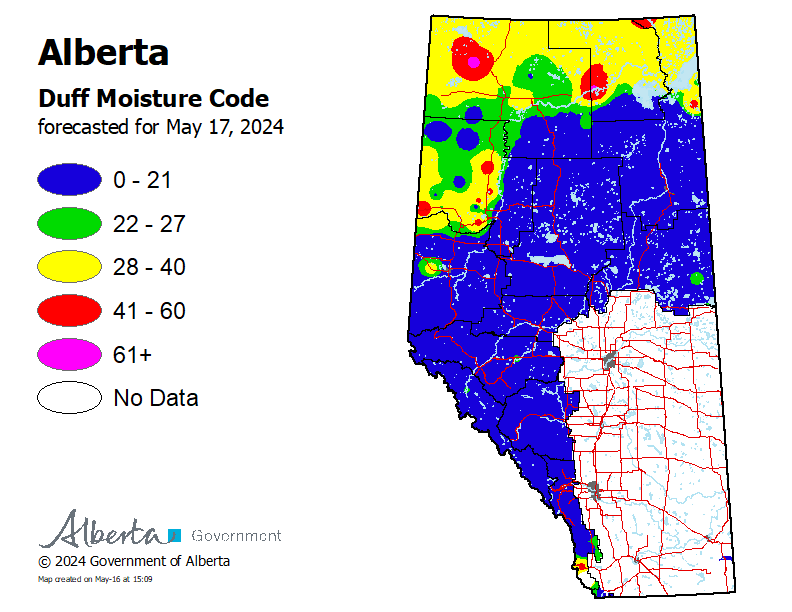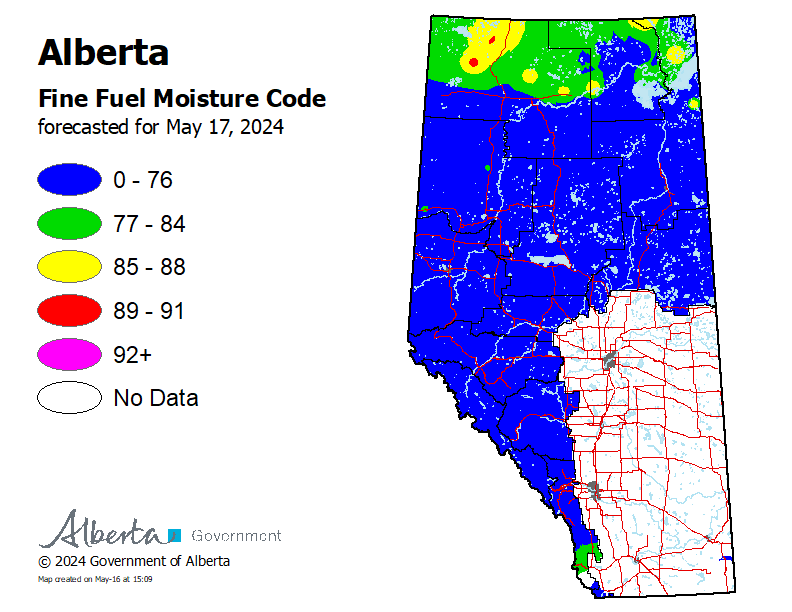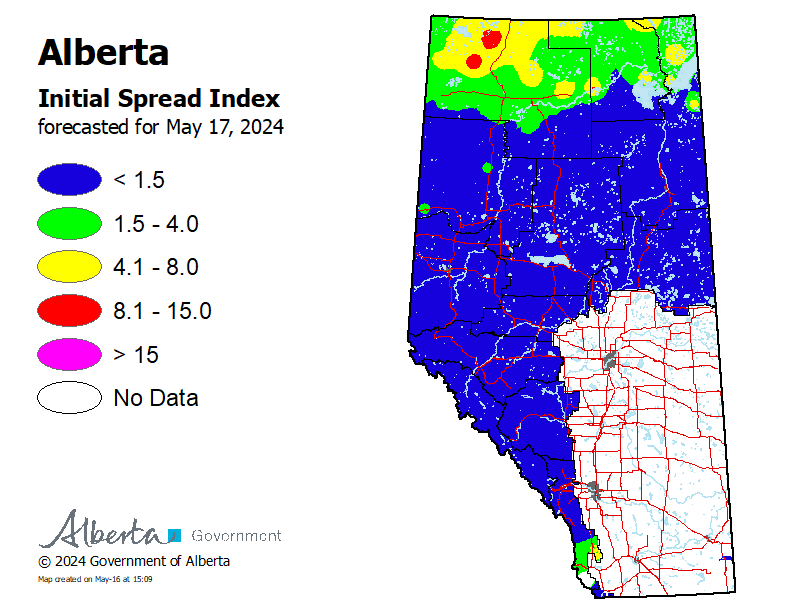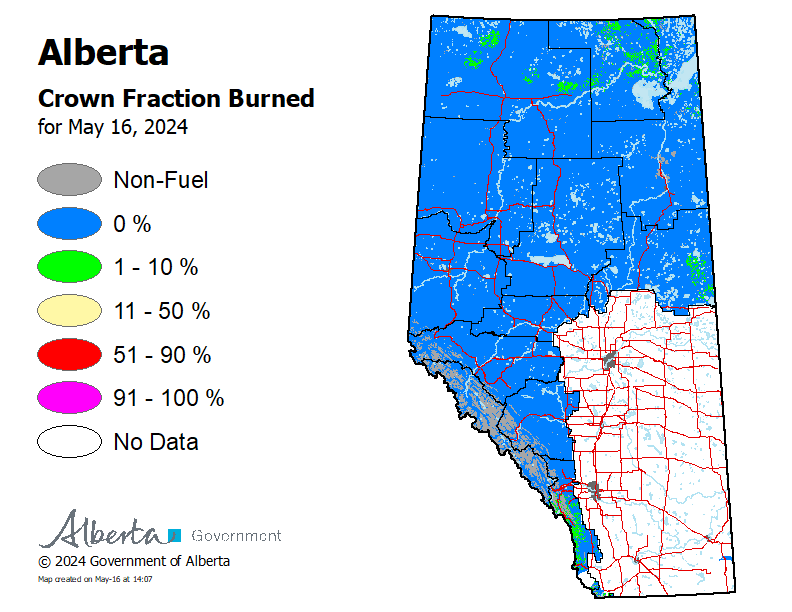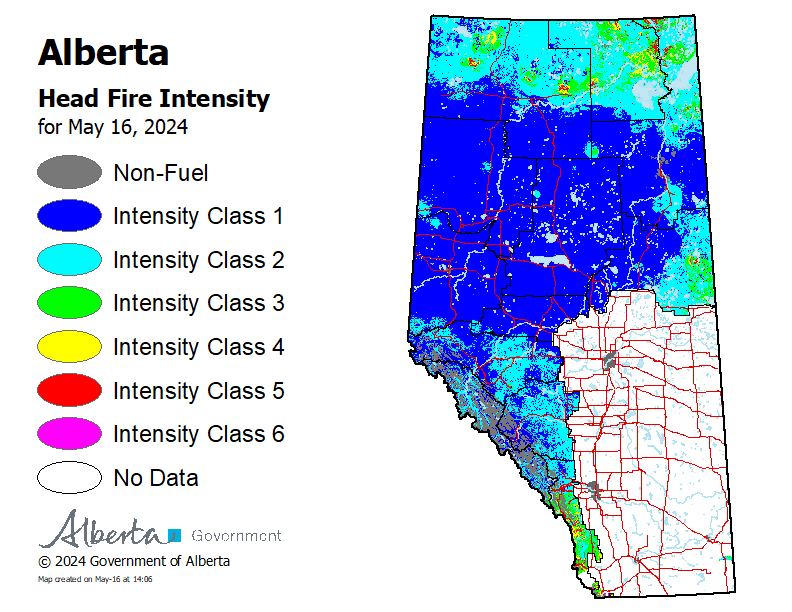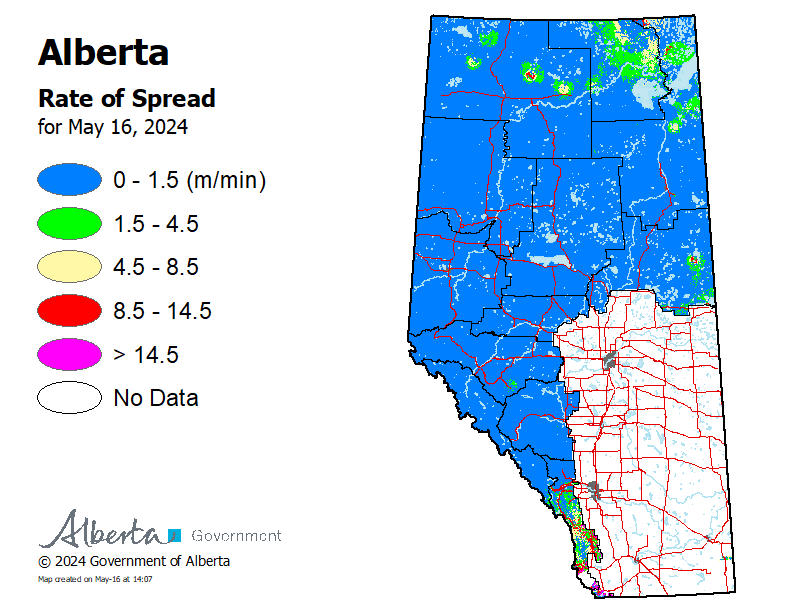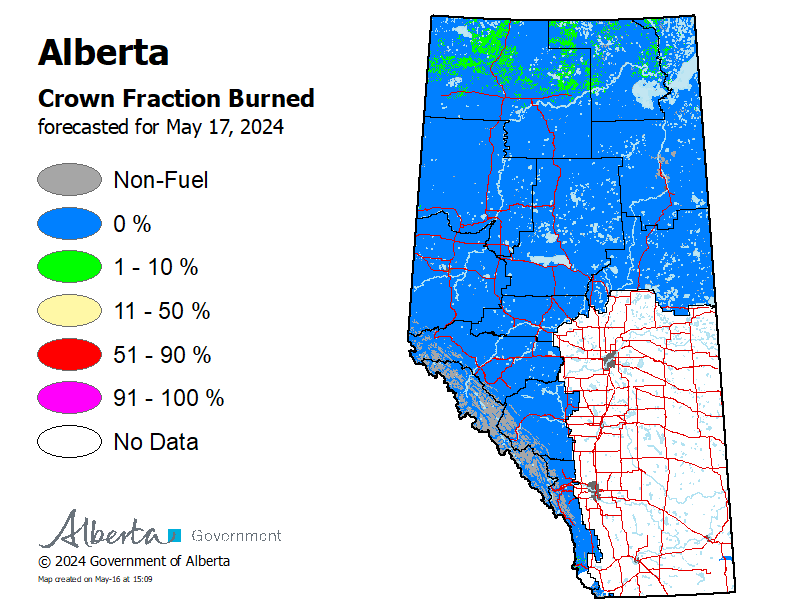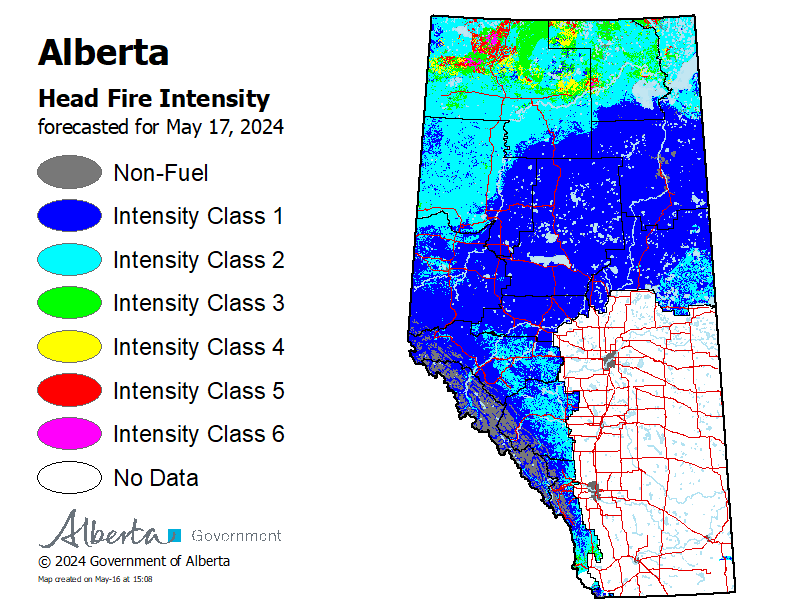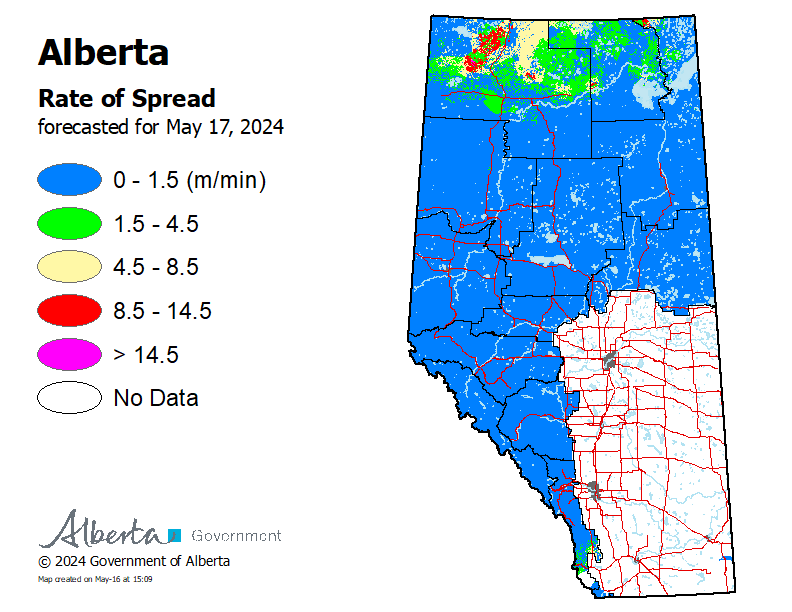Government mail service may be affected by the Canada Post labour disruption. Learn about how critical government mail will be handled.
Call 310-FIRE (3473) to report a wildfire in a forested area.
Overview
Fire danger is a general assessment of the fire environment that determines the ease of ignition, rate of spread, difficulty of control and fire impact.
Maps are generated to guide management decisions for wildfire personnel, fire managers, and other stakeholders in the Forest Protection Area of Alberta. They are produced daily during wildfire season, from March 1 to October 31. The final map will remain in place until next wildfire season, once snow has melted.
Fire Weather Index System
Fire danger is based on the Fire Weather Index System, which is derived from daily observations of temperature, relative humidity, precipitation and wind direction and speed. Low numbers mean wet and high numbers mean dry.
Actual fire danger maps
The following maps of Fire Weather Index codes indicate actual conditions, based on daily observations recorded at 1 pm.
Forecasted fire danger maps
The following maps of Fire Weather Index codes indicate forecasted conditions for the next day, based on the next day’s weather forecast created at 3 pm.
Fire behaviour
Fire behaviour is based on the Fire Behaviour Prediction System, which provides quantitative estimates of potential fuel consumption, fire intensity and head fire spread rate.
Maps are produced daily during wildfire season, from March 1 to October 31.
Actual fire behaviour maps
The following fire behaviour maps indicate actual conditions, based on Fire Weather Index codes calculated at 1 pm.
Forecasted fire behaviour maps
The following fire behaviour maps indicate forecasted conditions for the next day, based on forecasted Fire Weather Index codes calculated at 3 pm.
Contact
For questions about weather data, forecasts and observations:
Email: [email protected]
Information line: 1-866-394-3473 (FYI-FIRE)
Media inquiries: 780-420-1968
Email: [email protected]
